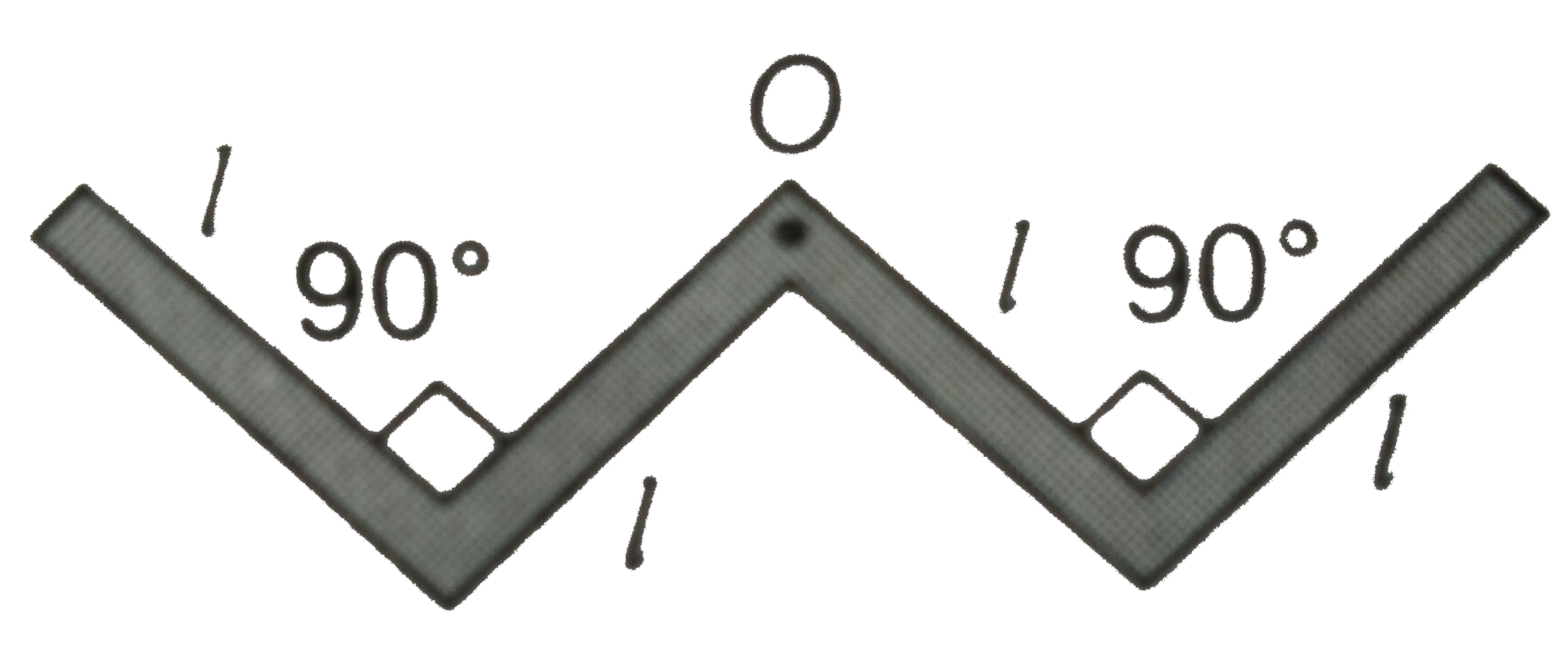Figure shows a thin, uniform rod of mass M and length L, on an x axis with the origin at the rod's center.
(a) What is the rotational inertia of the rod about the perpendicular rotation axis through the center?
(b) What is the rod's rotational inertia I about a new rotation axis that is perpendicular to the rod and through the left end?
(a) (1) The rod consists of a huge number of particles at a great many different distances from the rotation axis. We certainly do not want to sum their rotational inertias individually. So, we first write a general expression for the rotational inertia of a mass element dm at distance r from the rotation axis: r2dm. (2) Then we sum all such rotational inertias by integrating the expression.
I=∫r2dm.
(3) Because the rod is uniform and the rotation axis is at the center, we are actually calculating the rotational inertia Icom about the center of mass.
Calculations: We want to integrate with respect to coordinate x, so we must relate the mass dm of an element of the rod to its length dx along the rod. Because the rod is uniform, the ratio of mass to length is the same for all the elements and for the rod as a whole. Thus, we can write.

element.s mass dmelement.s length dx=rod.s mass Mrod.s length L
or dm=MLdx.
We can now substitute this result for dm and x for r in Eq. Then we integrate from end to end of the rod (from x = -L/2 to x = L/2) to include all the elements.
I=∫x=+L/2x=−L/2x2(ML)dx
= M3L[x3]+L/2−L/2=M3L[(L2)3−(−L2)3]
= 112ML2
(b) We can find I by shifting the origin of the x axis to the left end of the rod and then integrating from x = 0 to x = L. However, here we shall use a more powerful technique by applying the parallel-axis theorem, in which we shift the rotation axis without changing its orientation.
Calculations: If we place the axis at the rod.s end so that it is parallel to the axis through the center of mass, then we can use the parallel-axis theorem. We know from part (a) that Icom is 1/12 ML2. From Fig. the perpendicular distance h between the new rotation axis and the center of mass is 1/2 L. Equation given us
I=Icom+Mh2=112ML2+(M)(12L)2
= 13ML2.
Topper's Solved these Questions
- RIGID BODY DYNAMICS - IBook:RESNICK AND HALLIDAYChapter:RIGID BODY DYNAMICS - IExercise:CHECKPOINT
Explore 18 Videos
- RIGID BODY DYNAMICS - IBook:RESNICK AND HALLIDAYChapter:RIGID BODY DYNAMICS - IExercise:PROBLEMS
Explore 100 Videos
- RELATIVITYBook:RESNICK AND HALLIDAYChapter:RELATIVITYExercise:PRACTICE QUESTIONS (Integer Type)
Explore 5 Videos
- RIGID BODY DYNAMICS-IIBook:RESNICK AND HALLIDAYChapter:RIGID BODY DYNAMICS-IIExercise:PRACTICE QUESTIONS (Integer Type)
Explore 2 Videos
Similar Questions
The moment of inertia of a thin uniform rod of mass M, length L, about an axis passing through its centre and making an angle θ with the rod is
View SolutionWhat is the moment of inertia of a rod of mass M and length L about an axis perpendicular to it through one end ? Given the moment of inertia about the centre of mass is- 112ML2
View Solution
Knowledge Check
The moment of inertia of a thin uniform rod of mass M and length L about an axis perpendicular to the rod, through its centre is I. The moment of inertia of the rod about an axis perpendicular to rod through its end point is
AI4BI2C2ID4IThe moment of inertia of a thin uniform rod of mass M and length l about an axis perpendicular to the rod through its centre is I. The moment of inertia of the rod through its end point is
AI4BI2C2ID4IMoment of inertia of a rod of mass 'M', length ? about an axis perpendicular to it through one end is,
AMl22,BMl23CMl212DNone of these
Figure a rigid body consisting of two particles of mass m connected by a rod of length L and negligible mass.
(a) What is the rotational inertia Icom about an axis through the center of mass, perpendicular to the rod as shown?
(b) What is the rotational inertia I of the body about an axis through the left end of the rod and parallel to the first axis.
View SolutionCalculate the moment of inertia of a rod of mass M, and length l about an axis perpendicular to it passing through one of its ends.
View Solution
A thin rod of length 4l, mass 4 m is bent at the point as shown in the figure. What is the moment of inertia of the rod about the axis passing through O and perpendicular to the plane of the paper?
View SolutionIf l1 is the moment of inertia of a thin rod about an axis perpendicular to its length and passing through its centre of mass and l2 is the moment of inertia (about central axis) of the ring formed by bending the rod, then the ratio of I1 to I2 is
View Solution
A thin rod of length 4l, mass 4 m is bent at the point as shown in the figure. What is the moment of inertia of the rod about the axis passing through O and perpendicular to the plane of the paper?
View Solution

